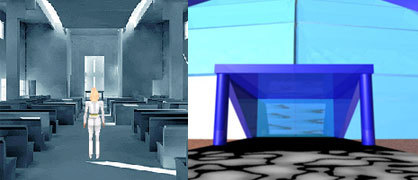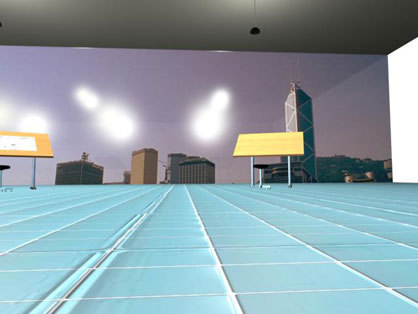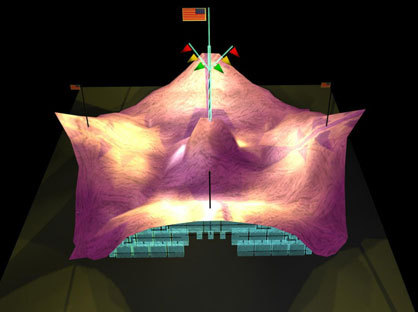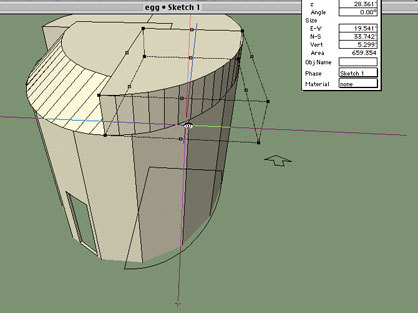DreamHaus
Texte par NoéMie Schwaller
Zürich, Suisse
08.10.08
DreamHaus is a design game which uses architecture as the basis for the study of mathematics, technical planning and physics. It uses the possibility of displaying buildings as systems and enables players to experience architecture by manipulating the systems.
The role played by physics and technology in the study of architecture is represented by the work of the design engineer, who checks structural plans for factors such as stability, electronic equipment, ventilation systems and heating and cooling systems. DreamHaus represents the link between the two disciplines, using the artistic fascination and romance of architecture to present technology and physics to players of computer games.
DreamHaus is a design game which uses architecture as the basis for the study of mathematics, technical planning and physics. It uses the possibility of displaying buildings as systems and enables players to experience architecture by manipulating the systems. The players survey fantastic virtual buildings such as the Tokyo Olympic Stadium, for example, solve physically and technically based tasks and architectural design problems with the game's design resources in a construction engineering simulation environment.
One focal point is the creation of buildings which are exposed to extreme conditions. Players can also present their work in a web-based community relating to the game, and exchange ideas and information. These game practices have been successful with non-gamers in games such as Myst, SimCity and The Sims.
DreamHaus is grounded in David Perkins' Teaching for Understanding a pedagogical framework that is designed to foster deep, intuitive understandings of phenomena by providin learners multiple entry paths into understanding and performance-based modes of expression.
The gameplay consists of five elements:
1 Visiting architecturally significant buildings
2 Solving puzzles to unlock the mysteries of each building
3 Conversing with the ghosts of (or living) architects
4 Designing buildings
5 Trading and critiquing designs through the online community.
To win the Gold, each architect must fulfil seven design challenges, plus a final open-ended design challenge. Each builds on content from the previous level while introducing a new physics and engineering concepts or principles.







